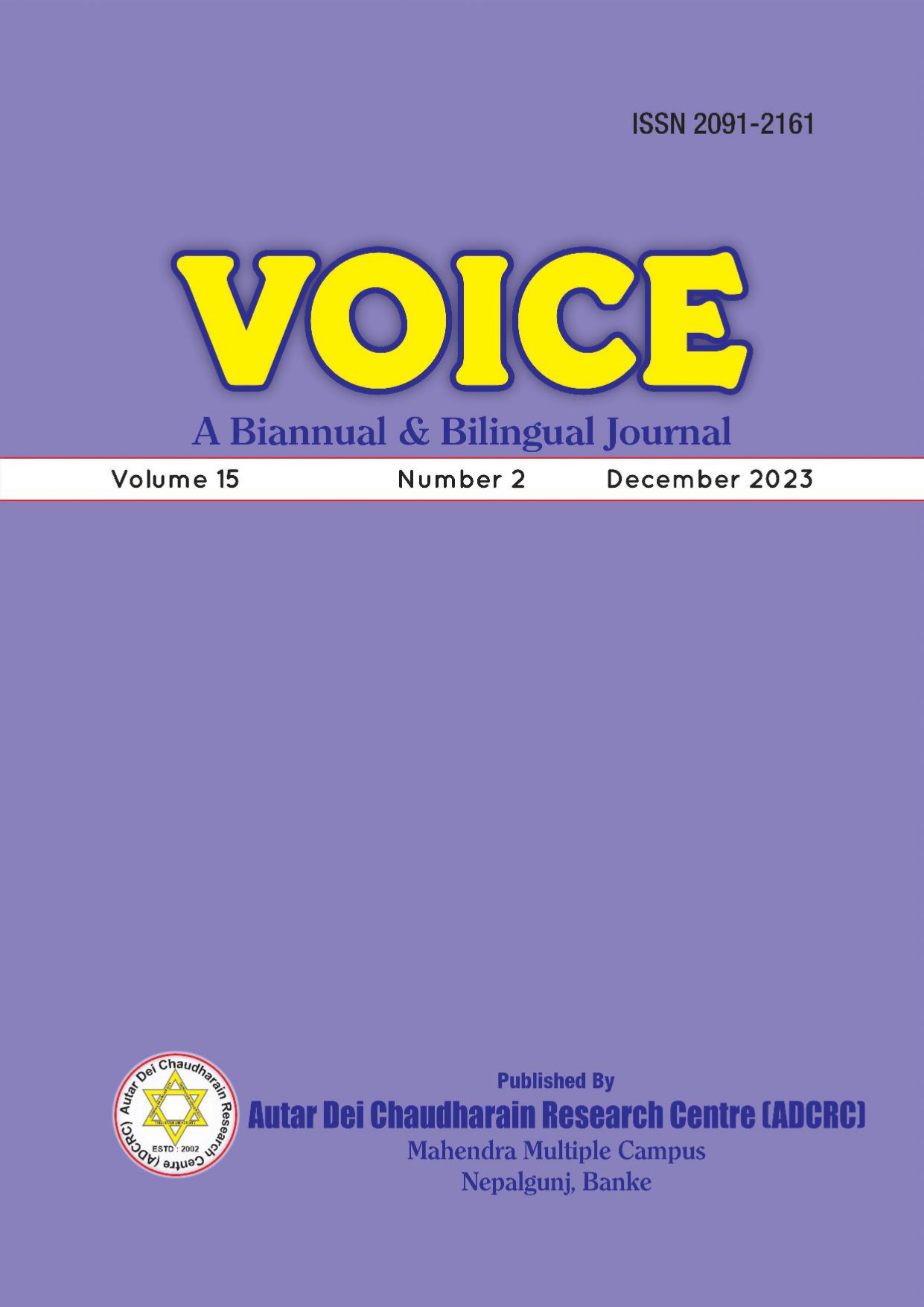Does Maila Speak? A Journey of a Common Man in Mahananda Dhakal’s Burhan
DOI:
https://doi.org/10.3126/voice.v15i2.61427Keywords:
Elites, liberation movement, marginality, representation, subaltern, TharuAbstract
This paper examines the reasoning behind the voice (lessness) of Maila Tharu and his son Somlal Tharu, the prominent characters in Mahananda Dhakal’s novel Burhan, representing the western Nepalese Tharu community, in the context of the discussion on subaltern awareness within Nepal’s caste-based elite structure. The paper observes the novel’s present presumptions regarding subaltern consciousness and resistance by looking at Maila, one of the leaders of the Nepali socio-political movement, and their seemingly unquestioned goal of mainstreaming. Furthermore, it highlights the Tharus’ social reality in the light of how the subaltern is misrepresented and altered during transitions, particularly in Nepal’s numerous political- cultural movements, both before and after the Maoist insurgency and the Tharu Liberation movement. The study, which is a qualitative analytical research work, tries to conclude that despite the political liberation movements that took place throughout Nepal’s political history, the voice for prosperity is still overshadowed by the contemporary governmental structure, where marginalized people like Tharus have turned into the victims of all kinds of wars and movements. In fact, Maila Tharu cannot speak nor is heard if today’s power politics continues. Characters like Maila Tharu and his son Somlal experience the biases of cultural interactions and political changes as well as so-called right-based activism, which, until this day, works against economic prosperity.
Downloads
Downloads
Published
How to Cite
Issue
Section
License
Copyright (c) 2023 Raj Kumar Tharu, Bhagbat Paudel

This work is licensed under a Creative Commons Attribution-NonCommercial 4.0 International License.
CC BY-NC: This license allows reusers to distribute, remix, adapt, and build upon the material in any medium or format for noncommercial purposes only, and only so long as attribution is given to the creator.




